“The Lone Eagle, March 1934″ by Eugene M. Frandzen
Eugene M. Frandzen painted the covers of The Lone Eagle from its first issue in September 1933 until the June 1937 issue when Rudolph Belarski took over with the August issue of that year. At the start of the run, Frandzen painted covers of general air action much like his Sky Fighters covers. Here, for the March 1934 cover, Frandzen has a D.H.5 being attacked by a Pfalz D.12!
The Story of the Cover
THE planes pictured on this 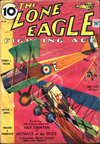 month’s cover are the De Haviland 5 (D.H.5), an unusual back staggered job giving the pilot exceptionally good visibility, and the Pfalz D.12. The De Haviland name is taken from the chief designer of the Aircraft Manufacturing Co., a British company formed in 1912. The Pfalz D.12 was the successor to a long line of Pfalz ships, some of them—pusher—manufactured before the World War.
month’s cover are the De Haviland 5 (D.H.5), an unusual back staggered job giving the pilot exceptionally good visibility, and the Pfalz D.12. The De Haviland name is taken from the chief designer of the Aircraft Manufacturing Co., a British company formed in 1912. The Pfalz D.12 was the successor to a long line of Pfalz ships, some of them—pusher—manufactured before the World War.
The usual V struts ordinarily appearing on the Pfalz ships have been discarded in this later model for twin bays of N struts on either side of the fuselage.
The D.H.5 pictured on the cover had been brought back into the war in 1918. It did its duty during 1917 nnd sent many German ships crashing to earth.
But those enemy planes were about equal in speed to the D.H.5. The Pfalz can outdistance the back-staggered British job about twenty miles per hour—some handicap. But don’t overlook the second D.H. coming into the fracas from above.
The pilots of the Allied ships are two Yank pilots, who, thinking the war in the air had become too tame, thought up a scheme to lure the Jerries into a real scrap. “We’ll give ‘em odds,” said one to the other.
“We’ll borrow those two old D.H.5s over in the Limey’s barn and go out and beg the Boche to come and play with us. Lately they’ve been hiding out way behind their own lines. We’ll sorta tie one hand behind the back and put a chip on our shoulder.” And so it came to pass that early one morning, helped by a British mechanic who was glad to get the relics out of his crowded hangar, they “borrowed” the two crates.
Back and forth above the lines the two Yanks drove their ships, ships which but a year before had been the last screech when it came to speed and maneuverability, but now pushed to the sidelines to make room for faster jobs. In the distance and in the direction of the German dromes they saw a single ship winging toward them at about one hundred and twenty-five miles per hour. The D.H.5s continued to saunter along at their hundred and five mile clip.
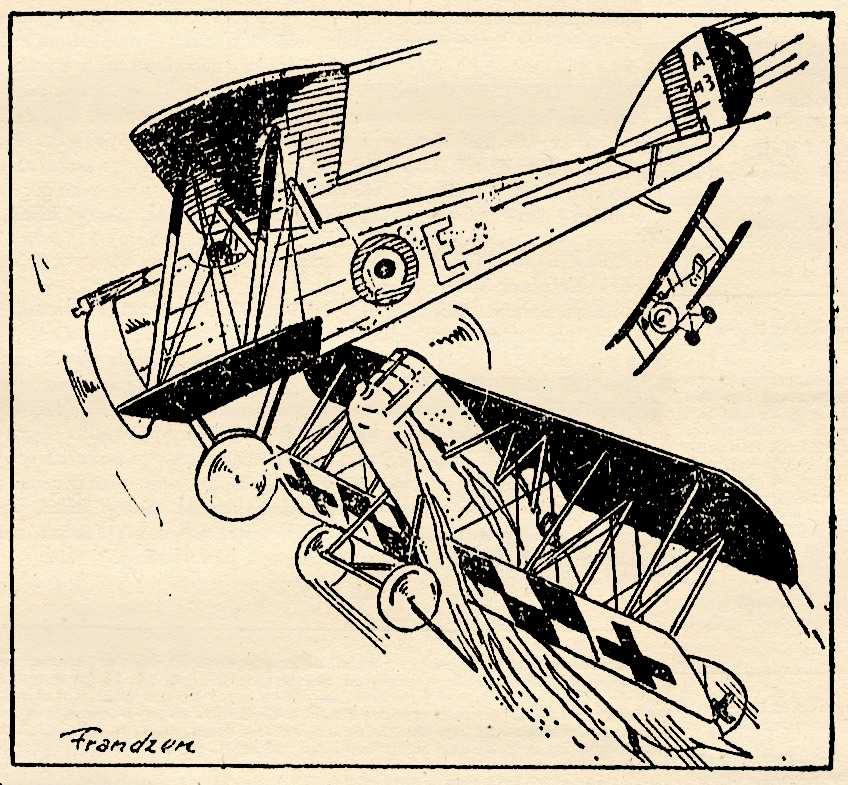
Evidently the Hun pilot knew that he was being bated because he became cagey when within striking distance. He shaded his eyes and looked carefully toward the sun. No lurking Allied ships could he spot, neither could he see any in any other direction. He licked his lips and cleared his guns.
Wham, he gave the Pfalz the gun and roared in to annihilate the brazen Yanks.
They let him blast them, let him get his bullets dangerously close to their skins before they lammed out of range. But those two were buddies, air buddies who worked together on enemy ships. Timing was their favorite stunt when flying their Spads. All they had to do in the slower crates was to wait a few seconds longer before opening up and letting the attacking ship slide through between them.
They did exactly this and then as the Hun was about to swing his fast ship around and barge back at the Yanks he found twin streams of lead boring into his ship, one stream from each single gun mounted on the front of the two D.Hs. A couple of those slugs got the gas tank. The engine sputtered, a tiny whisp of flame swept back, then suddenly the whole front of the engine cowling belched flames. One D.H. flashed by the German, whose ship was now slowed down under the speed of his enemy. The German yanked at his stick. If he could only climb his ship enough he’d ram the Yank with his flaming crate, take him with him on his death dive. But don’t worry, he didn’t do it because his opponents were only giving him a last salute before starting for home, giving him a chance for a last crack at them, but in doing it they didn’t take any chances of being shot down.
The Yank in the foreground didn’t flip into the Boche’s ring-sight till only the tail of his ancient crate would be available for the Spandau bullets to perforate. Again our friend had used—TIMING.
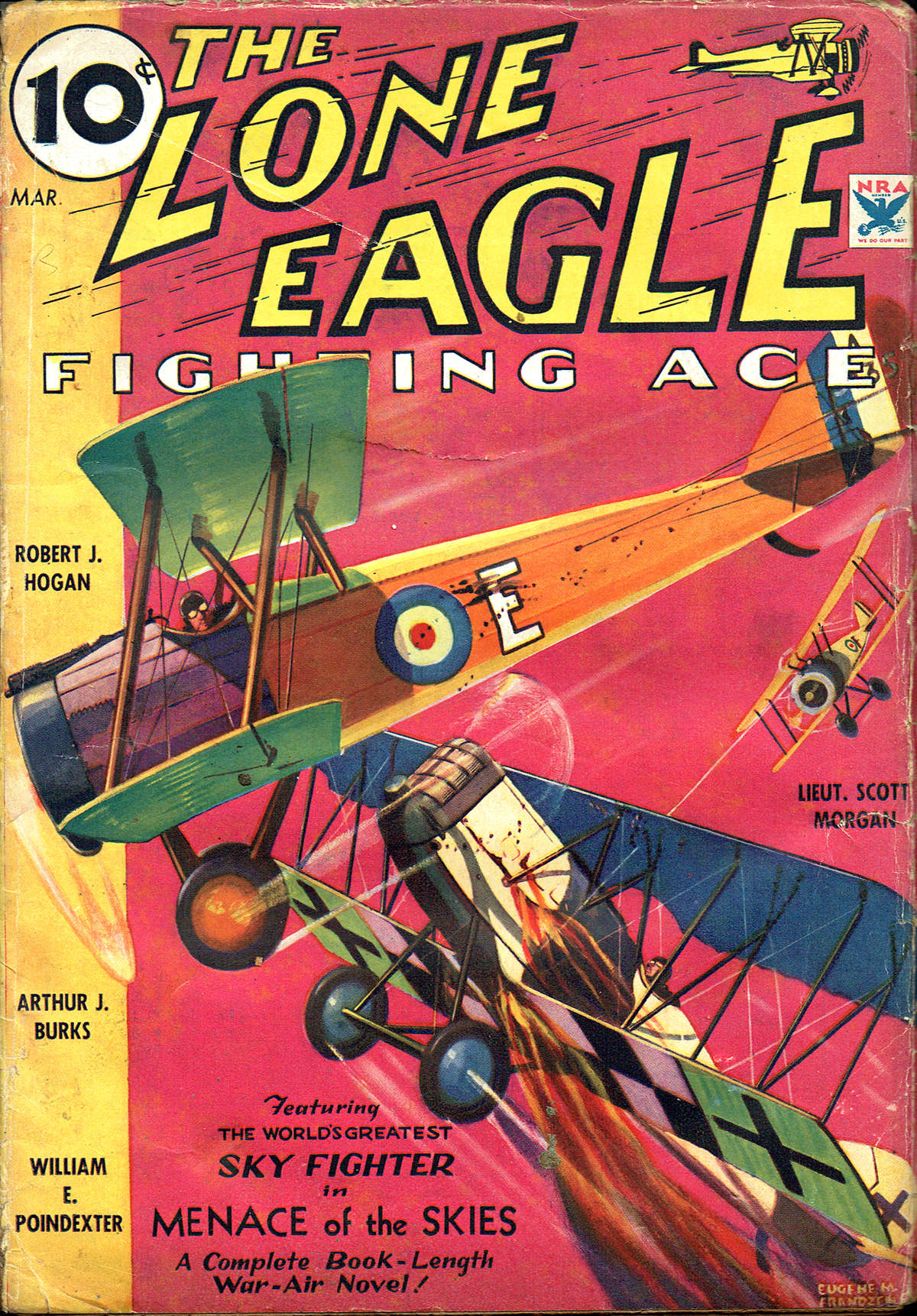
The Lone Eagle, March 1934 by Eugene M. Frandzen
(The Story of The Cover Page)





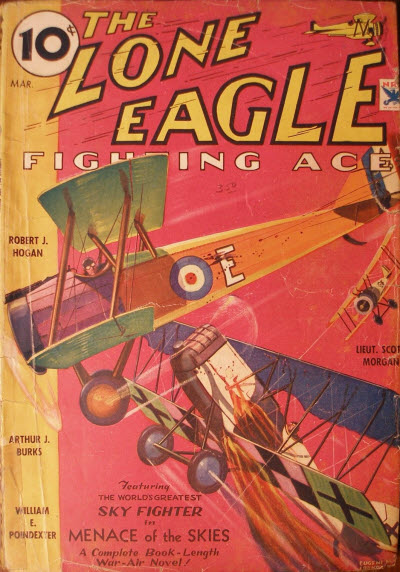 a story from the prolific pen of Mr. Robert J. Hogan—the author of
a story from the prolific pen of Mr. Robert J. Hogan—the author of 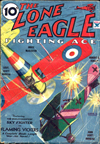
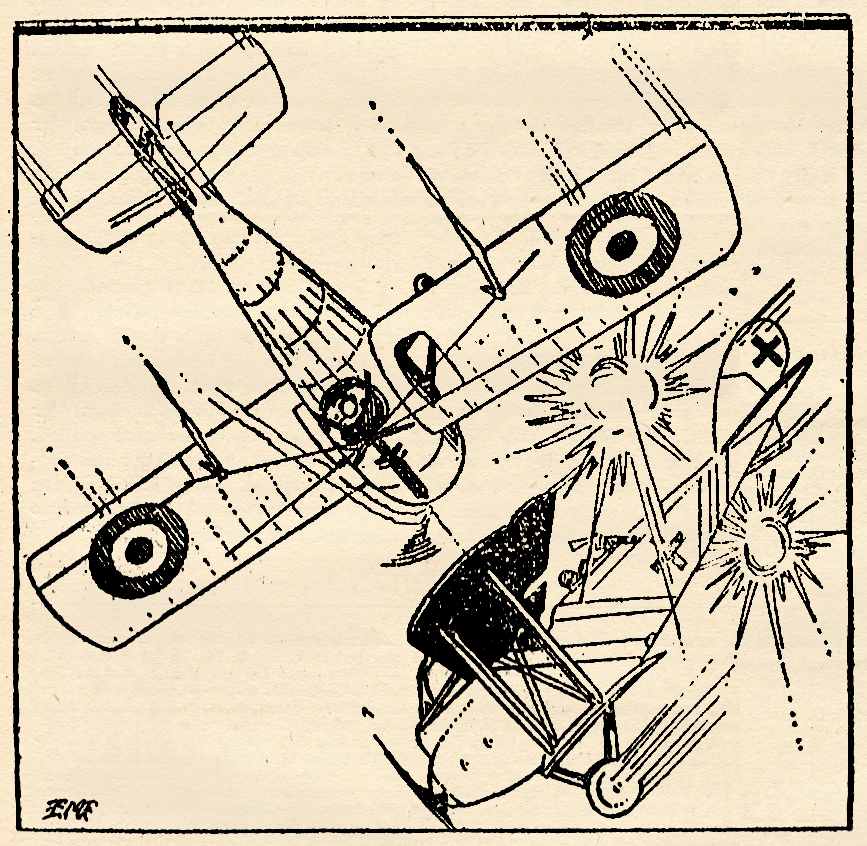
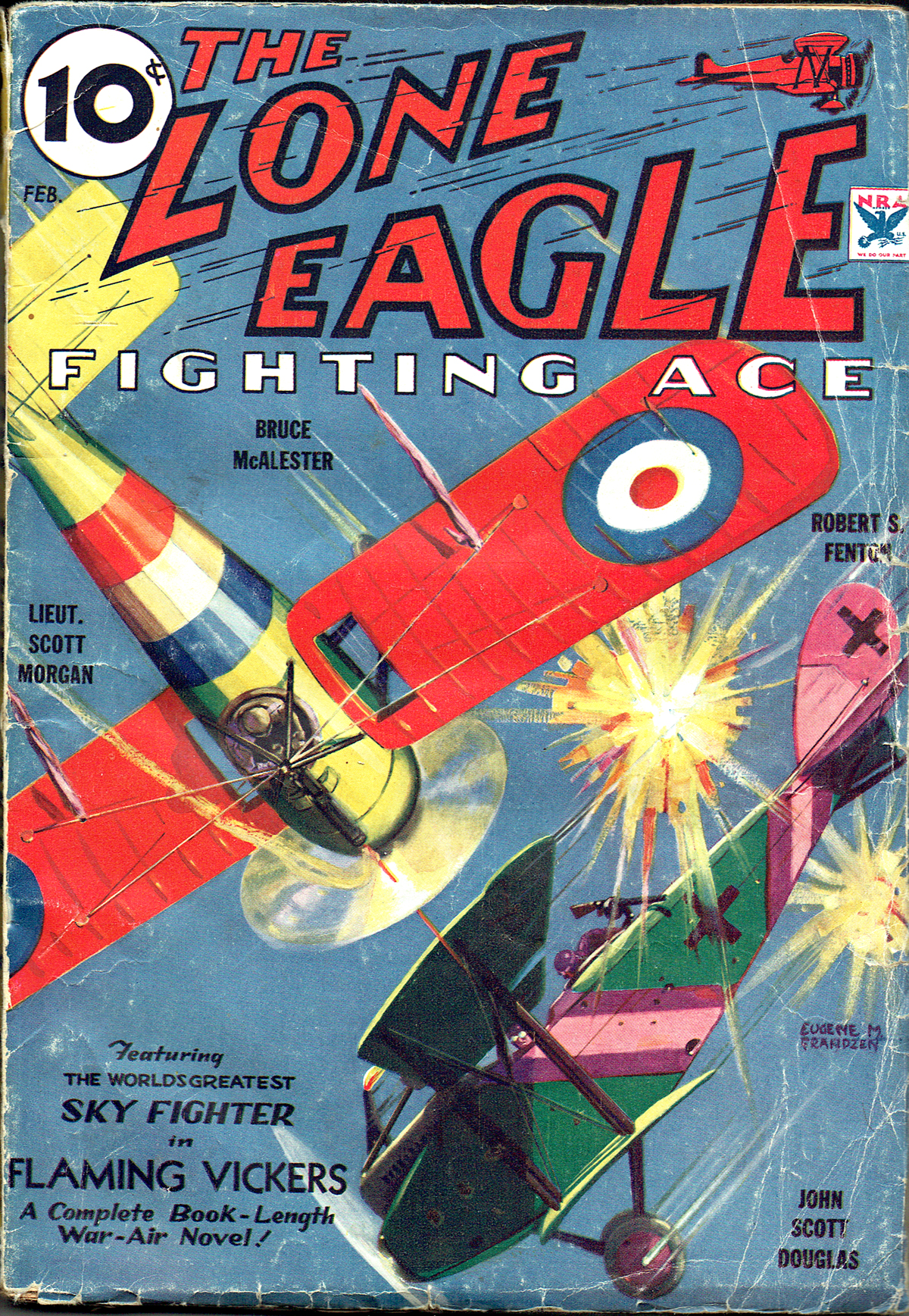
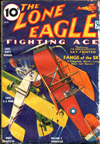
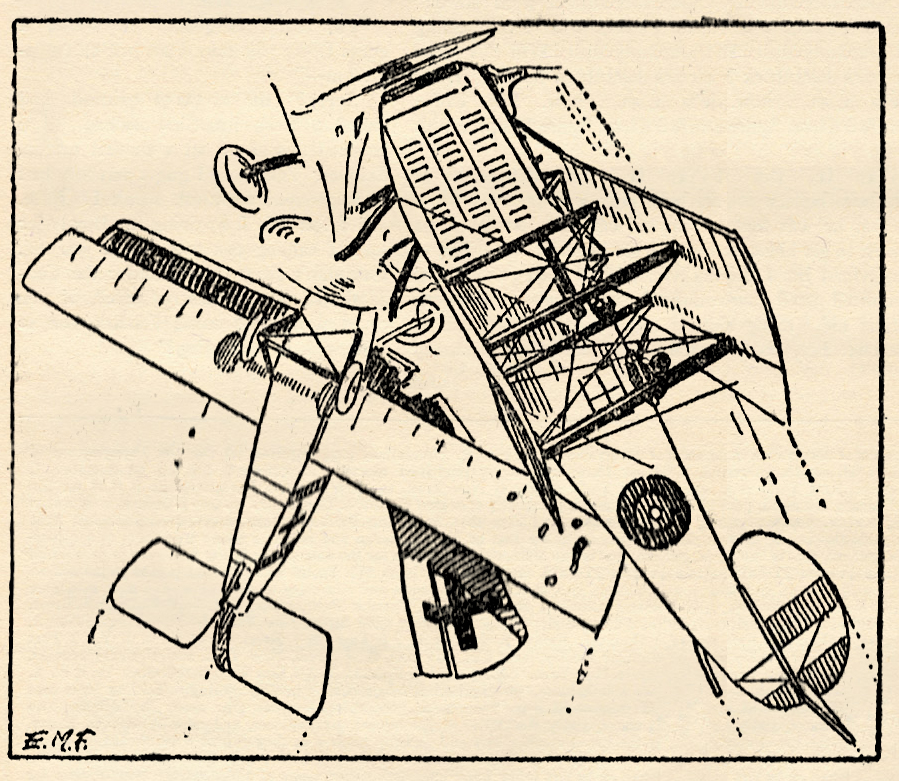
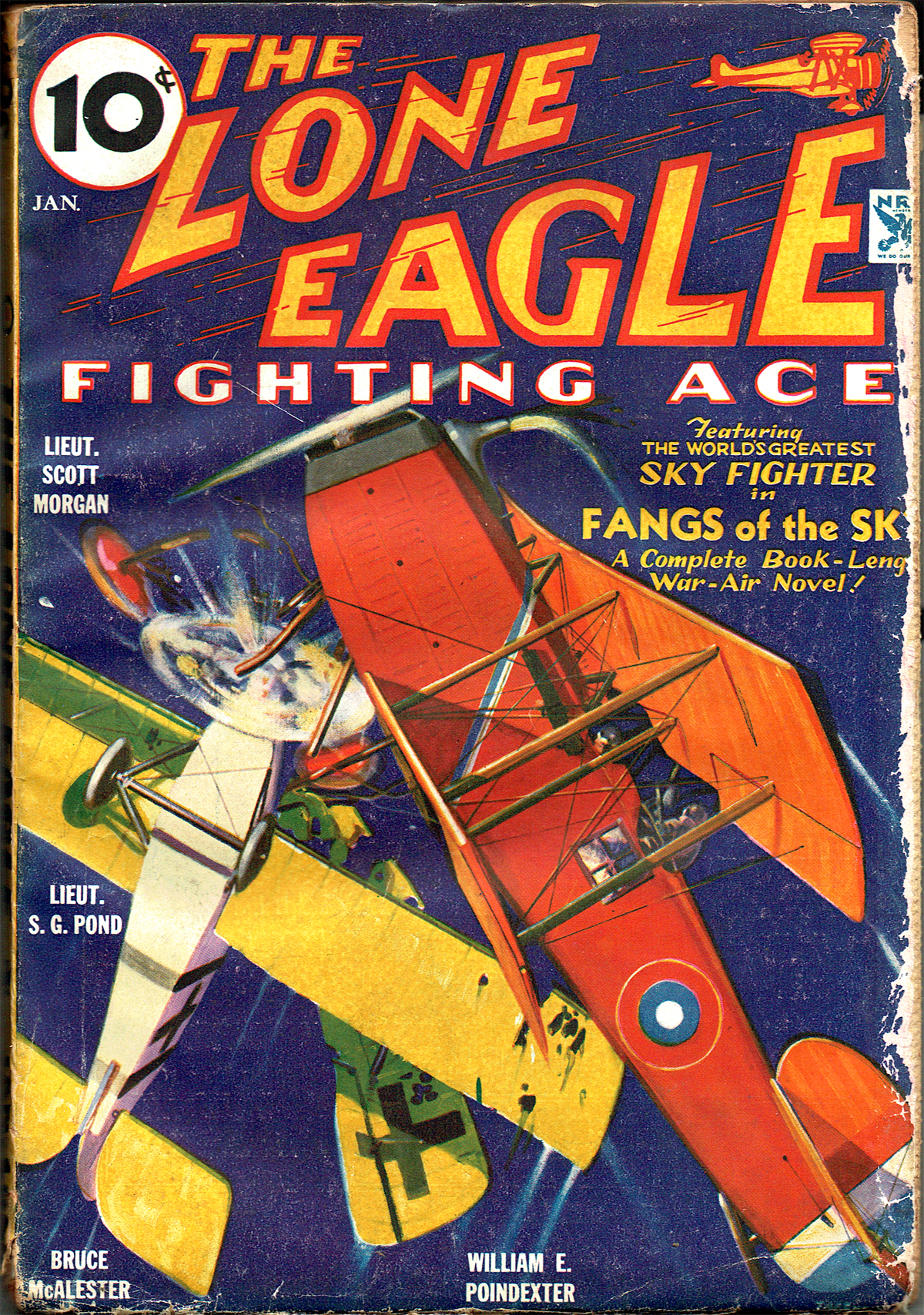

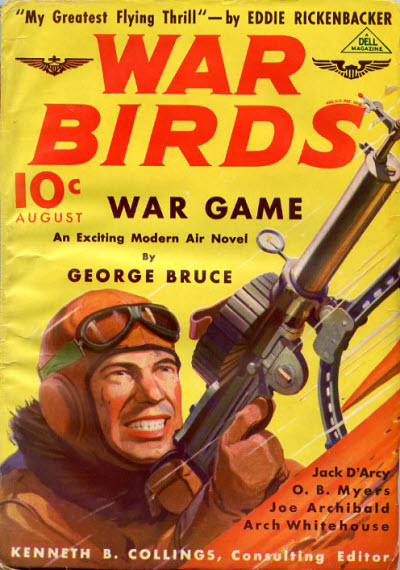 as a bonus, Joe Archibald’s first tale of Ambrose Hooley. No Muley Spinks as yet, but all the other elements are there—the 93 Pursuit Squadron, Major Bagby and Ambrose shooting krauts out of the sky like ducks in a barrel while simultaneously working all the angles. The tale of assumed identity is illustrated by our old friend
as a bonus, Joe Archibald’s first tale of Ambrose Hooley. No Muley Spinks as yet, but all the other elements are there—the 93 Pursuit Squadron, Major Bagby and Ambrose shooting krauts out of the sky like ducks in a barrel while simultaneously working all the angles. The tale of assumed identity is illustrated by our old friend 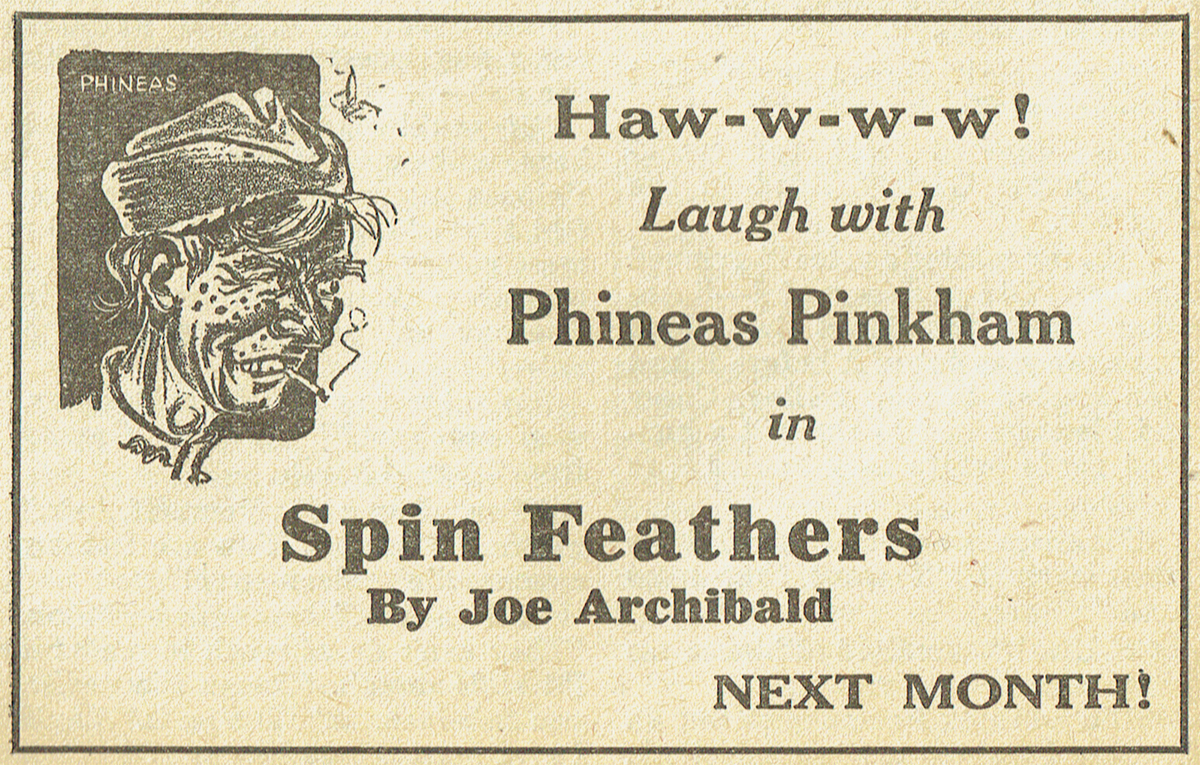
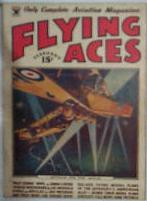 As a bonus, here’s Phineas Pinkham mirthquake from 1934. From the February number of Flying Aces Phineas goes to some inventive extremes to get a captured flyer back in “String ‘Em Back Alive!”
As a bonus, here’s Phineas Pinkham mirthquake from 1934. From the February number of Flying Aces Phineas goes to some inventive extremes to get a captured flyer back in “String ‘Em Back Alive!”